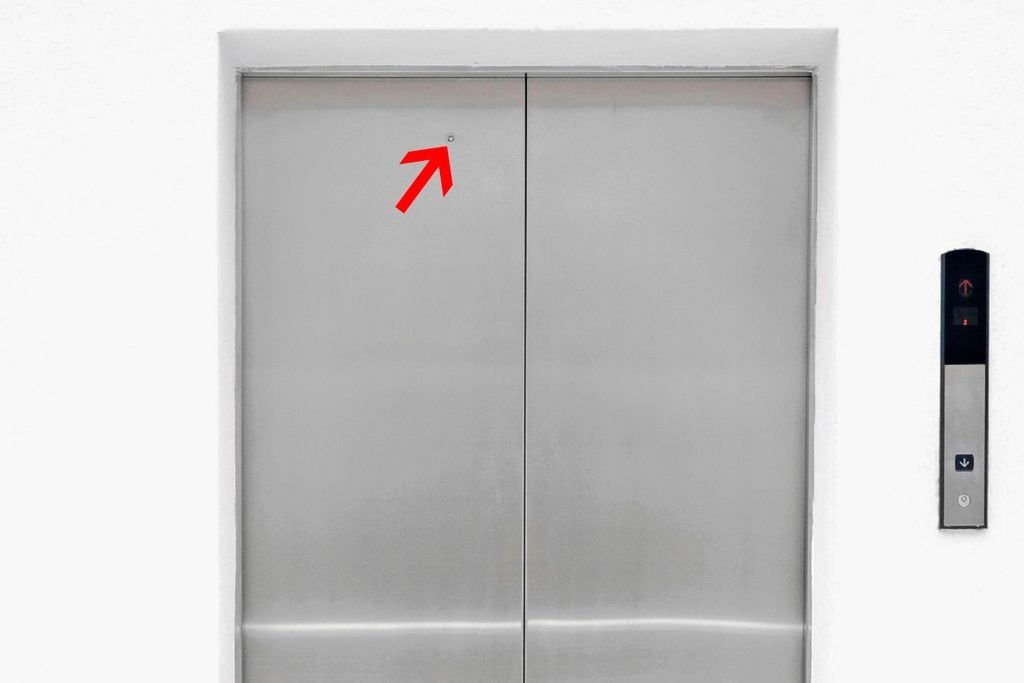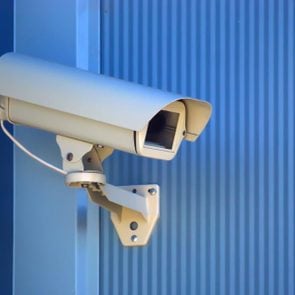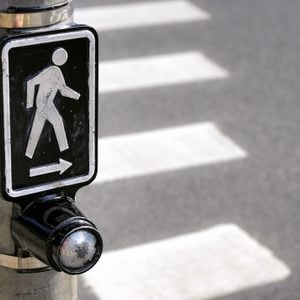Here’s Why Elevators Have Those Small Holes
Updated: Nov. 24, 2022

Ever wondered about the little hole in the elevator door? Us, too.
Elevator etiquette
Before COVID-19, an elevator ride up to your office or home was an everyday occurrence for many. Tall buildings relied on elevators to transport people and goods at all hours, packing in as many riders as possible. Unfortunately, once the pandemic hit, these small, poorly-ventilated boxes zooming up into the sky with multiple high-touch surfaces became a great source of concern. Thankfully, elevators have been addressing our safety concerns for years and are adapting to the world we’re living in as quickly as possible.
As for normal elevator safety concerns, such as stops, drops, or claustrophobia, elevators are built with a number of failsafes and surprising design elements to keep everyone safe. So what are these measures exactly—and why is there a tiny hole in the elevator door?
Safety first
That tiny hole you see on the elevator door? It might just save your life. Say the elevator you’re in stops at a floor and the doors don’t open. It could be a power failure or an equipment malfunction. But getting out isn’t easy. Elevators are equipped with lots of features to keep the doors from opening randomly or when they’re between floors.
“What you’ll usually see is the fire department, or sometimes the building mechanic, will get on site and use some procedures to get the people out while the problem is being worked on and hopefully repaired,” says Robert Solomon, the director of building, life safety codes, and fire protection systems for the National Fire Protection Association.
That’s where those small holes come in. Opening the doors requires a special tool called a hoistway door unlocking key. It gets inserted into the door to release the landing door. Since the fire code began requiring them in the 1970s, manufacturers such as Otis and Schindler have equipped their elevators with them. Learn the real reason why escalators have grooves, while you’re at it.
The keys are usually held by a restricted number of people, such as an elevator mechanic or building superintendent. The fire code also requires that special access tools for each building be kept in a secure location such as a Knox Box that firefighters can open.
Fortunately, it’s rare that using the keys is necessary, Solomon says. If you’re heading back to work, or back up to work, make sure to follow the new etiquette for elevators.

